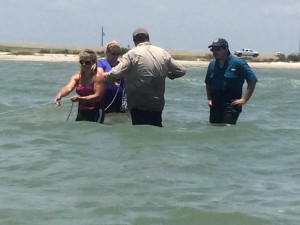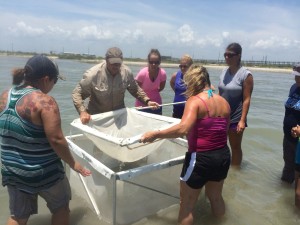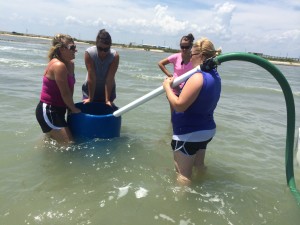Who We Are
What We Did
We extracted living organisms from the coastal waters and tested saline content in the water.
What We Learned
We learned various types of equipment used to extract organisms from the coastal waters. We learned the four types of environment that affect our coastal waters: mangrove, marshland, oyster reefs, and sea grass.
Indian Point equipment:
Throw trap: the large square net you throw and then sweep for organisms
Benthic sled: the long net on runners you run along the bottom of the water
Suction sampler: the motor and hoses that sucks water and organisms out of the barrel
Benthic core sampler: the pvc cylinders that removed a section of the sediment
Refractometer: the device used to measure salinity
Hydrolab and toughbook: the computer and data sonde that we can use to take readings of temperature, turbidity, salinity, dissolved oxygen, etc.
Questions We Have
What kind of changes might take place to the living organisms of the coastal waters if the exotic mangrove takes over the salt grass and/or marshlands?
Connections to Teaching
Providing students with hands on experiences will not only engage the students but leave a lasting impression.
Curriculum content areas that can be meet with this experience are:
scientific procedure- teaching hypothesis, data, thesis, procedure, and results
chemical/physical change- students can take water samples testing saline content and then recreate their own water solution matching the sample level. Then students can extract the water and test the theory of physical and/or chemical changes


